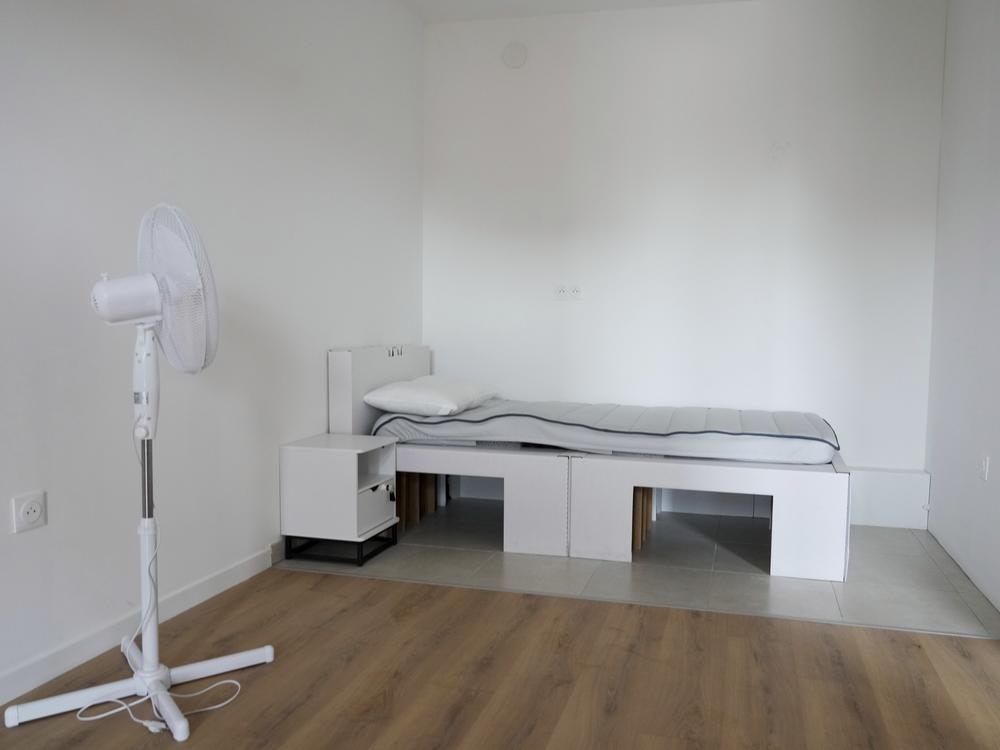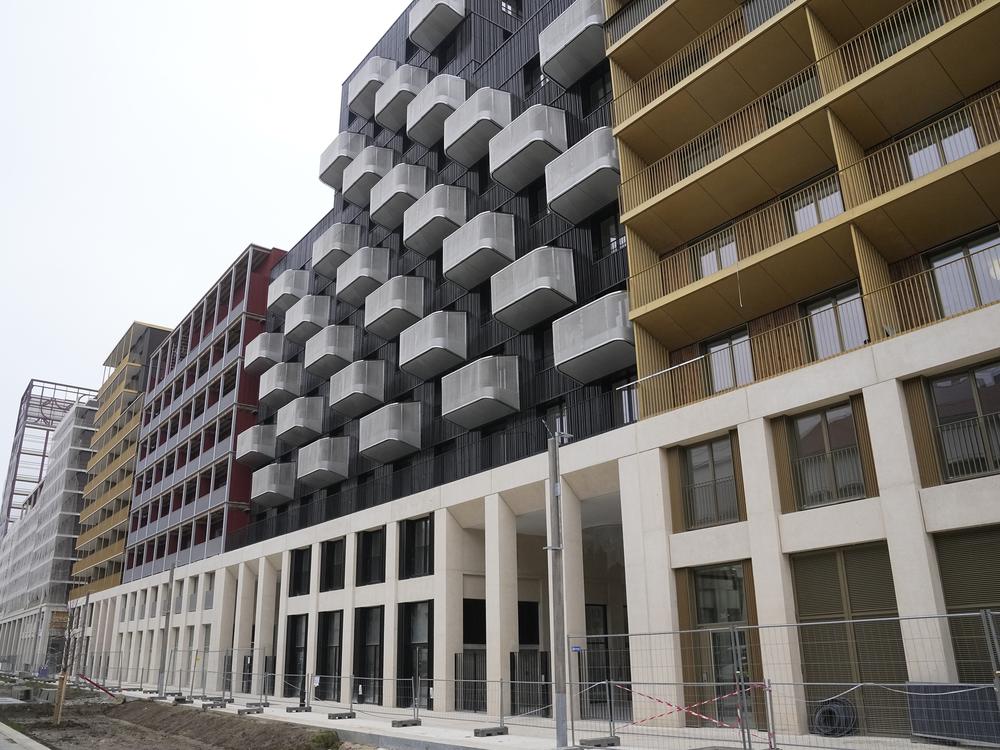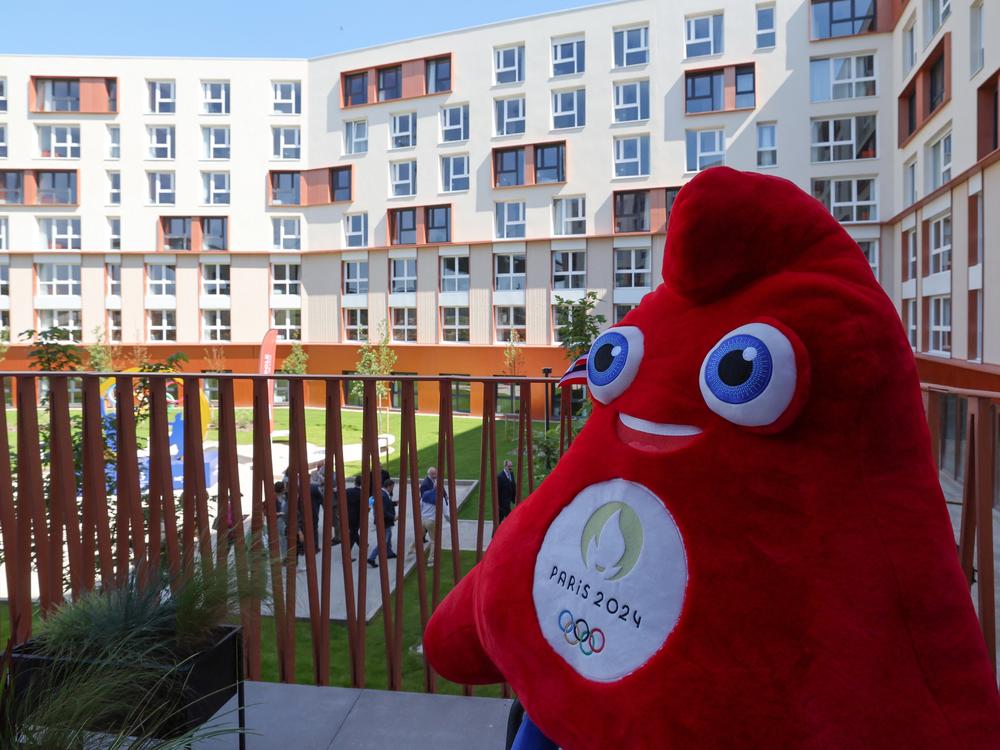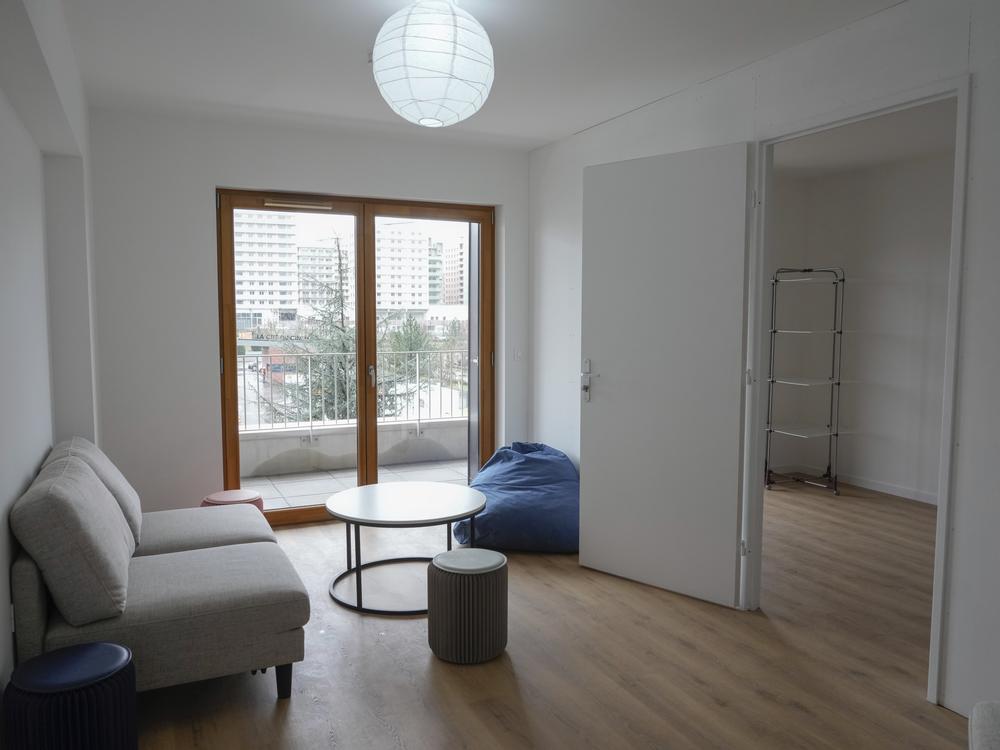Section Branding
Header Content
Paris wants an AC-free Olympic Village. Team USA and others aren't so chill with it
Primary Content
A month out from the summer Olympics in Paris, air conditioning is an increasingly hot topic.
In their effort to host what they’re calling the “greenest ever Games,” organizers chose not to install air conditioning at the complex where thousands of athletes and officials will stay throughout the season.
Instead, the Athletes' Village will be cooled by a system of water pipes running beneath the floorboards.
“This village was designed to avoid the need for air conditioning, even in very, very high temperatures, in order to maintain comfortable temperatures," Paris Mayor Anne Hidalgo said in March.
France was among the European countries that saw record-breaking heat waves last summer, which was the joint-hottest ever recorded on the continent. More than 5,000 people died in France last year as a result of extreme heat.
Densely-populated Paris has the highest risk of heat-related deaths of any European city. And a new report warns that high temperatures could pose a deadly threat to Olympians this year.
Officials aim to keep the rooms at between 73 to 79 degrees Fahrenheit, and will also provide fans.
But the response from many competing countries has not exactly been chill.
A growing number are planning to provide their athletes with portable units instead — and the U.S. is one of them.
Sarah Hirshland, CEO of the U.S. Olympic & Paralympic Committee (USOPC), confirmed at a Friday briefing that members of Team USA will have air conditioning in their rooms.
“In our conversations with athletes, this was a very high priority and something that the athletes felt was a critical component in their performance capability, and the predictability and consistency of what they're accustomed to,” she said, adding that the committee has “great respect” for organizers’ focus on sustainability.
When asked who would supply the air conditioners, Hirshland said, “I believe that the USOPC is responsible for those.”
The lack of AC isn't the only subject of criticism this week. Parisians threatened to defecate in the Seine River on Sunday to protest sewage contamination after reports found unsafe levels of E. coli bacteria in the water less than two months before Olympic swimming competitions are scheduled to start there.
Who else is bringing AC?
The Washington Post reported earlier this month that Canada, Great Britain, Italy, Germany, Greece, Denmark and Australia are among the countries with plans to use portable air conditioners in some or all of their athletes’ rooms.
Leaders from some of those countries have said publicly that they either plan to bring the units themselves or obtain them in France.
Spyros Capralos, the president of Greece’s Olympic committee, said they would “spare no expense” for their athletes, and either buy air conditioners or find a sponsor to cover them, EuroNews reported earlier this year.
Australian officials, for their part, are spending upwards of $100,000 to keep athletes cool.
“We appreciate the concept of not having air conditioning due to the carbon footprint,” Australian Olympic Committee Matt Carroll told reporters last year. “But it is a high-performance Games. We’re not going for a picnic.”
Japanese officials have also said that they plan to pay for athletes’ air conditioning, for “safety and security” reasons. They told the Japan Times last week that they placed orders via the organizers’ rate cards, a list of add-on amenities available to delegations at an extra price.
Not all countries can afford to pay for lower sleeping temperatures, however.
“We don’t have deep pockets,” Donald Rukare, president of the Uganda Olympic Committee, told the Post.
Hidalgo, who is against countries bringing their own units, stressed earlier this year that Paris organizers would not change course.
“I think we have to trust science on two counts,” she said. “The first is what scientists are telling us about the fact that we are on the brink of a precipice. Everyone, including the athletes, must be aware of this. And secondly, we have to trust the scientists when they help us to construct buildings in a sober way that allows us to make do without air conditioning.”
Experts warn of extreme temperatures and risks to athletes
The 2021 Summer Olympics in Tokyo were the hottest in history, with numerous competitors fainting and vomiting at finish lines, being carted away in wheelchairs and outright expressing fears that they would die from the heat.
Researchers warn that this year’s temperatures could be even higher.
A group of scientists and athletes from around the world joined forces to warn about the risks of heat in their second Rings of Fire report, released last week.
The 37-page report outlines scientists’ predictions for high temperatures in Paris, athletes’ testimonials about the effects of competing in extreme heat and several key requests for organizers of summer sporting competitions.
Those include avoiding scheduling events in the hottest times of day and reassessing their sponsorships with fossil fuel companies.
“For athletes, from smaller performance-impacting issues like sleep disruption and last minute changes to event timings, to exacerbated health impacts and heat related stress and injury, the consequences can be varied and wide-ranging,” Lord Sebastian Coe, president of World Athletics, writes in the introduction. “Whilst global temperatures continuing to rise, climate change should increasingly be viewed as an existential threat to sport.”
The report notes that annual temperatures in Paris have warmed by some 3.24 degrees Fahrenheit since the city last hosted the Olympics a century ago, in 1924, and that average temperatures during the months of the Olympics have warmed by more than 5.58 degrees in that time.
It goes on to detail some of the physical and physiological impacts of competing in hot conditions, from heat cramps to heat stroke, cognitive impairment to compromised cardiovascular function.
It also highlights the temperature limits at the Paris venues for specific sports and includes quotes from athletes about their past experiences competing under such conditions.
“For me it’s like you are in the build-up to the worst part of a bad flu – shivery and weird and hot and cold,” said tennis player Marcus Daniell of New Zealand. “Your mind can’t focus and your mouth is disgustingly dry. And the dangerous thing is that athletes often don’t know when to stop, because we’re conditioned to push ourselves beyond limits as a rule.”
The village will become housing after the Games
Air conditioning is much less common in Europe than in the U.S., and especially rare in France.
Less than a quarter of French households had AC as of 2022, compared to nearly 90% of those in the U.S.
The Associated Press reported earlier this year that organizers have been studying heatwaves block by block throughout the Athletes' Village and simulated those conditions to test their cooling system.
“Despite outdoor temperatures reaching 41 degrees Celsius (106 degrees Fahrenheit), we had temperatures at 28 degrees (82 degrees Fahrenheit) in most of these rooms,” said Laurent Michaud, the director of the Olympic and Paralympic Villages. “In other rooms, we clearly had lower temperatures.”
He said athletes will have to follow certain basic requirements, like keeping the blinds shut during the day, to maximize the coolness.
Hidalgo — who has pledged to make Paris climate-neutral by 2050 — said that compared to a conventional project, the carbon impact of the Athletes' Village will be reduced by 45% during construction and throughout the Olympic cycle.
Between July and September, the village will host 15,600 Olympic athletes and sports officials and 9,000 Paralympic athletes and support teams, according to the AP.
Afterward, the 125-acre site will become a “zero-carbon, eco-friendly residential and commercial neighborhood.”
The first of its 6,000 new inhabitants are slated to move in as soon as 2025. And even with the Olympics fast approaching, Hidalgo is thinking farther ahead.
“What matters to me is that these buildings, these flats will become a neighborhood where people from L'Ile-Saint-Denis, Saint-Ouen and Saint-Denis (in the Paris suburbs) will live,” she told Reuters in March. “These new buildings won't need air conditioning, so we're working for the long term."
Correction:
This story has been updated to accurately reflect the amount by which Paris has warmed since 1924.




